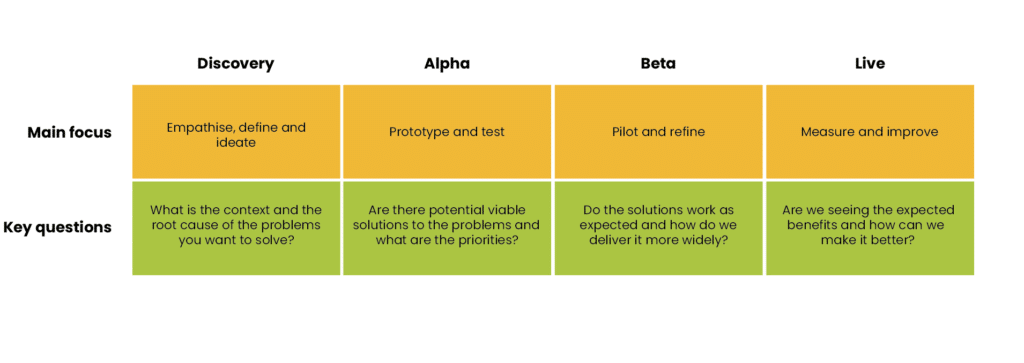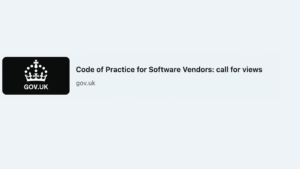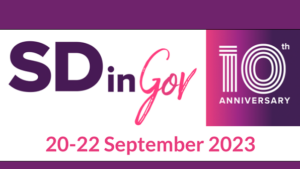
Product Management in the public sector: How it benefits government
The last blog looked at the importance of balancing the user, organisation and technology in digital product delivery. This blog gives a bit more detail about how that works in government and the public sector.
The vast majority of product deliveries in government follow the Discovery, Alpha, Beta, Live stages. This works perfectly with a product-based approach as it encourages you to first focus on the articulation of problems and then progressively ideate and refine solutions.
There are key questions you should be asking yourselves at each of those stages. If you can articulate clear answers to those questions, you’ve thought about the right things related to the users, organisation and technology.

Benefits of product management in government
The big advantage of product management is that it encourages evidence-based conversations throughout the whole product lifecycle. Zeroing in on the public sector, it helps government organisations to:
Be efficient and save money. By understanding and taking into equal consideration user needs, organisational objectives and technology, you’re less likely to take time-wasting detours and make costly mistakes. If you solve the wrong thing, cause you don’t understand the actual problem, you waste a lot of money and time.
Create better products in the short, medium, long term. Taking into consideration the three elements (organisation, user, technology) from the start means nasty surprises are less likely to emerge in the future. There’s also a clear alignment between the vision of the organisation and the user’s needs.
Shift focus from solutions to finding out problems. Often work happens because someone ‘needs to do/have’ something. The product management approach ensures you ask ‘why.’ It means you move away from just implementing solutions someone’s requested to really teasing out the exact problem you’re looking to solve. There’s a focus on outcomes, not output. Focusing on problems and being agnostic about solutions means you reach an outcome that addresses a problem for the user quicker.
Naturally joins up teams. With individuals from business, user research and tech involved, it means you naturally see a breaking down of silos and a more cohesive team. The product approach aligns teams and that helps with overall confidence of the team and management.
Product thinking
Before you take a practical step, you need to begin thinking with a product mindset. So:
- Be open to challenge yourself on the ‘what’ and ‘why’. Are you clear on visions/goals and the measurement of those things?
- Are you willing to slow down to speed up? Invest more in upfront activity. Albert Einstein said: If I were given one hour to save the planet, I would spend 59 minutes defining the problem and one minute resolving it.” Gathering evidence takes time but it challenges or affirms perception. You don’t want to start off on a wrong, costly track.
- Embrace not knowing and experimenting. Don’t assume solutions. Find out through research and experimentation what the correct solution is.
The next blog will go into more detail about how we go about applying this thinking across the product lifecycle.
If you would like to talk to Steven and find out more about Product Management and how it can help your organisation then get in touch
Related content
-

My first Regional Scrum Gathering in Stockholm – key takeaways
Published on: 30 October, 2024 -

How product management improves public sector digital services
Published on: 26 September, 2024 -

Bringing an SME perspective to government’s Code of Practice for Software Vendors
Published on: 4 July, 2024 -

Lightning talks: Being a ‘Product Manager Mum’ – Service Design in Government
Published on: 24 August, 2023
